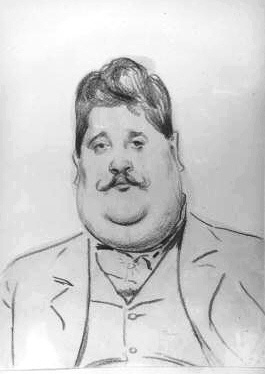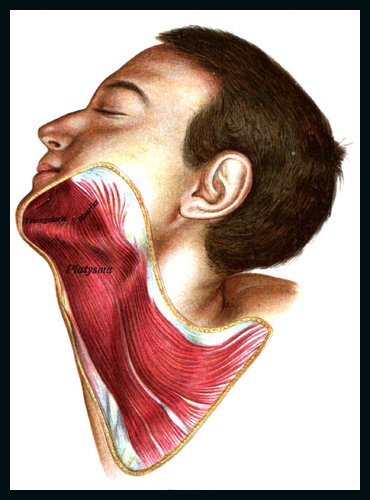Enhance your health with free online physiotherapy exercise lessons and videos about various disease and health condition
Double Chin Exercise
Understanding Double Chin Exercise

While many people suffer from DOUBLE CHIN problem, mostly people don't know the reason for their problem. This article will give you the information about connection of Platysma muscle with double chins. Also you will learn some great double chin exercise to strengthen platysma muscle to prevent your neck area from sagging.
A double chin appears when fat deposits accumulate in the platysma muscle area, causing the chin region to sag. Aging can also cause double chins, since the skin is no longer as tight as it used to be, thus causing what is colloquially called turkey neck. In either circumstances, the bands of the platysma muscle can become thick and cord-like, eventually causing these to tent the skin of the neck area and dangle between the jawbone and the collarbone. Whether the double chin is caused by aging or unnecessary neck fat, exercise may help reduce the amount of sag in the neck area.
What is Platysma?
The platysma is the muscle that allows us to create and control our lower face expressions. It spreads out in a wide sheet that begins at the chest, runs up over the clavicle i.e. collarbone, and then stretches up along the sides of the neck to the chin. The primary function of the platysma is to help move the lower lip and jaw downward or to the side. The contraction of this muscle is the cause behind a variety of facial expressions, including smiling, frowning, and grimacing.

Platysma exercise can help tighten this loose skin and the muscles underneath to minimize the appearance of your double chin. These double chin exercises are designed to firm the neck and jaw, and the area just beneath your chin. For best results, do these exercises several times per day.
Double Chin Exercise Instructions (Muscles in focus are Platysma, mentalis and sternocleidomastoid)
Tongue Exercise ( Platysma strengthening exercise)
Before you consider going through double chin surgery, consider doing these exercises to work out your platysma muscle. Not only are these options cheaper, these are also much safer.
- Sit in a straight-backed chair with your shoulders in line with your hips and your ears lined up over your shoulders. Look straight ahead, holding your chin level.
- Open your mouth as wide as you can comfortably without moving your head.
- Stick out your tongue and try to touch your chin. Hold this position for 5 seconds and then relax.
- Rest for 2 seconds and then repeat this process ten times.
Neck Crunch ( Platysma strengthening exercise)
- Lie flat on your back on your bed. Do not rest your head or any other part of your body on a pillow.
- Tuck your chin and lift your head while keeping your shoulders on the floor. Attempt to touch your chest with your chin.
- Hold the position for 5 seconds and then release. Rest for 2 seconds and then repeat this process nine more times.
Ceiling Kiss with stretching platysma muscle
- Sit in a straight-backed chair with your shoulders in line with your hips and your ears lined up over your shoulders. Look straight ahead, holding your chin level.
- Tilt your chin toward the ceiling. Pucker your lips and stretch your neck as if you were trying to kiss the ceiling.
- Hold this position for 5 seconds and then release for 2 seconds. Repeat this process nine more times.
Ceiling Chew with stretching platysma muscle
- Sit in a straight-backed chair with your shoulders in line with your hips and your ears lined up over your shoulders. Look straight ahead, holding your chin level.
- Put a piece of gum in your mouth.
- Tilt your chin toward the ceiling and chew the gum 20 times. Relax for 2 seconds and then repeat the process nine more times.
For an unfortunate handful of people, the double chin can be a genetic condition that can only be corrected through surgery. For most others, Double Chin Exercise can help!
Read More About Double Chin and Platysma Exercises Here
Return From Double Chin Exercise to Best weight loss exercises
Recent Articles
|
Author's Pick
Rating: 4.4 Votes: 252 |

